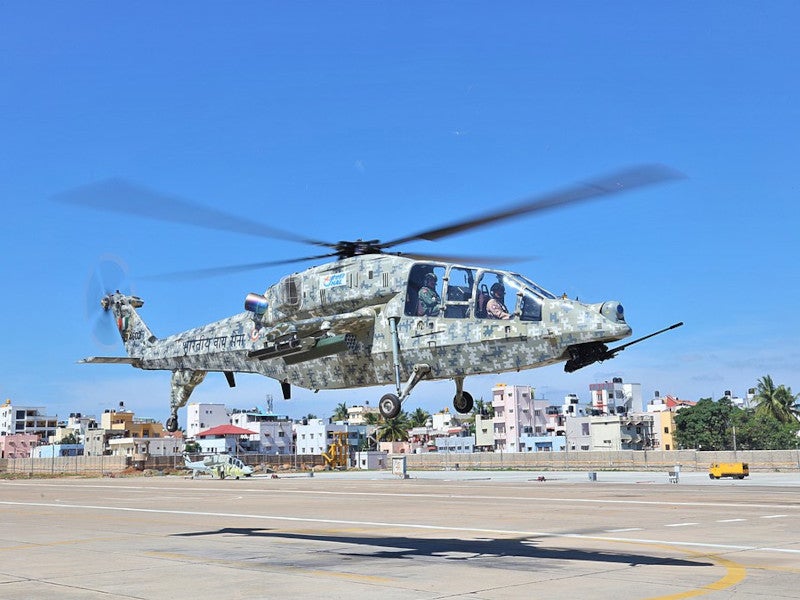SOURCE: AFI


In a significant boost to India’s indigenous defense capabilities, Hindustan Aeronautics Limited (HAL) is set to conduct trials of the HELINA anti-tank guided missile (ATGM) with its Light Combat Helicopter (LCH) Prachand, which has entered the Low-Rate Initial Production (LRIP) phase.
The integration of this critical weapon system is poised to enhance the Prachand’s anti-armor capabilities, addressing a key requirement for the Indian Army and Indian Air Force (IAF) as they finalize a landmark deal for 165 Prachand helicopters. Leveraging technology shared with the ALH Rudra Mk-IV, a weaponized variant of the ALH Dhruv, the integration process is expected to be swift, bypassing the need for an extensive trial period.
The HELINA (Helicopter-launched Nag), known as Dhruvastra in its IAF variant, is a third-generation, fire-and-forget ATGM developed by the Defence Research and Development Organisation (DRDO). With a range of 7–8 kilometers, the missile features an advanced Imaging Infrared (IIR) seeker, enabling precise targeting in both Lock-on-Before-Launch (LOBL) and Lock-on-After-Launch (LOAL) modes. Its tandem high-explosive anti-tank warhead is designed to neutralize armored threats, including main battle tanks, making it a cornerstone of the Prachand’s anti-armor arsenal. The missile’s “fire-and-forget” capability allows the helicopter to engage targets and maneuver away immediately, enhancing survivability in high-threat environments.
The HELINA has already been successfully tested on the ALH Rudra Mk-IV, a platform that shares significant technological overlap with the LCH Prachand, including avionics, sensors, and flight control systems. This commonality, as reported by idrw.org, ensures a streamlined integration process, as the missile’s operational clearance on the Rudra reduces the need for extensive revalidation on the Prachand. HAL insiders have confirmed that integration efforts are already underway, with live-fire trials expected to commence soon to validate the missile’s performance on the new platform.
The LCH Prachand, inducted into the IAF on October 3, 2022, and named “Prachand” (meaning “fierce”), is India’s first indigenous attack helicopter designed specifically for high-altitude operations. Capable of operating at altitudes up to 16,400 feet, the Prachand is tailored for missions in challenging environments like the Siachen Glacier and Eastern Ladakh, where it demonstrated its prowess during the 2020–2022 China-India skirmishes. Powered by two HAL/Safran Shakti turboshaft engines, the 5.8-tonne helicopter features a tandem-seat cockpit, stealth characteristics, and a robust suite of sensors, including a charge-coupled device (CCD) camera, forward-looking infrared (FLIR) camera, and laser designator.
The Prachand’s current armament includes a 20mm M621 cannon in a Nexter THL-20 turret, 70mm FZ275 rockets, and MBDA Mistral-2 air-to-air missiles. However, the absence of an integrated ATGM has limited its anti-armor capabilities, a gap that the HELINA integration aims to address. The helicopter’s modular design allows it to carry up to four quad-packed ATGMs on its wing hardpoints, making the HELINA a critical addition to its offensive repertoire.
The technological synergy between the LCH Prachand and ALH Rudra Mk-IV is a key factor in expediting the HELINA’s integration. The Rudra, which has already validated the HELINA/Dhruvastra through extensive trials, shares similar avionics and targeting systems, including a helmet-mounted sight and electro-optical pod. According to idrw.org, the trials on the Prachand are primarily a procedural step to certify the missile’s compatibility with the new platform, rather than a comprehensive evaluation of its performance. This is expected to significantly reduce the trial duration, enabling faster operational deployment.
Both the Indian Army and IAF are keen to see the Prachand equipped with the HELINA, recognizing the ATGM as a vital component of any modern attack helicopter. The missile’s ability to engage armored targets at standoff ranges of up to 8 kilometers enhances the Prachand’s lethality while minimizing exposure to enemy air defenses, such as man-portable air-defense systems (MANPADS). The integration is a prerequisite for finalizing the ?62,700 crore ($7.36 billion) deal signed on March 28, 2025, for 156 Prachand helicopters—90 for the Army and 66 for the IAF. Deliveries are slated to begin in 2028, with HAL’s Tumkuru facility geared to produce up to 30 helicopters annually.
NOTE: AFI is a proud outsourced content creator partner of IDRW.ORG. All content created by AFI is the sole property of AFI and is protected by copyright. AFI takes copyright infringement seriously and will pursue all legal options available to protect its content.